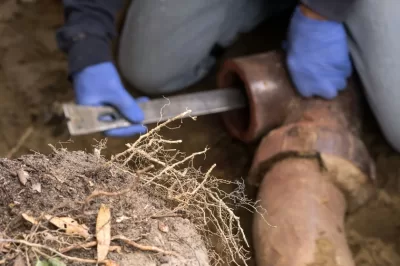What Is The Best Way To Remove Roots From A Sewer Line?
What Is The Best Way To Remove Roots From A Sewer Line?
Trees add beauty to our environment, offering shade and greenery that many of us cherish. However, their roots can become a real headache when they invade and clog our sewer lines.
When the underground roots of trees sense the moisture and nutrients in sewer pipes, they can infiltrate small cracks and joints, gradually growing and obstructing the flow or even causing damage.
What Kills Roots in Sewer Lines Fast?
The quickest solution for killing roots in sewer lines is often a chemical treatment. Copper sulfate crystals and foaming root killers containing dichlobenil are popular options. When applied correctly, these substances can effectively kill the roots within your sewer pipes without harming the tree itself.
Once the roots are dead, their decay process begins, making them easier to remove. However, this is not an immediate solution, as it takes time for the roots to die and decompose.
When using chemical treatments, it’s essential to follow the instructions carefully and use them as a preventative measure. Overuse or improper application can lead to environmental issues and may even corrode your pipes over time. It’s always a good idea to consult with a professional to ensure the right approach for your situation.
What Will Dissolve Roots in the Sewer?
When it comes to dissolving roots in the sewer, patience is key. There isn’t a magic solution that will instantly dissolve tree roots, but regular maintenance using root-killing chemicals can prevent the roots from growing large enough to cause blockages.
In some cases, strong chemicals like sulfuric acid or bleach are suggested for root dissolution, but these can be incredibly harmful to the environment and potentially damage the pipes further. Hence, they are not recommended for untrained individuals to use.
Professional plumbers might use a specialized root-dissolving agent as part of their arsenal when dealing with severe root intrusion. These treatments are typically administered by professionals and are often used in conjunction with mechanical removal methods for better results.
How Do You Remove Roots from a Main Sewer Line?

Hydro jetting is another effective method used by professionals. This process involves using high-pressure water jets to cut through and wash away the roots. Hydro jetting not only clears the immediate blockage but also cleans the walls of the pipes, which can help delay the regrowth of roots.
A professional plumber should carry out these methods, as they can be dangerous and may require digging up certain sections of the pipe or using advanced equipment.
How Do You Unclog a Sewer Line?
Unclogging a sewer line can be a complex task, depending on the severity and nature of the clog. For a simple blockage, a plumbing snake or auger can often do the trick. This tool can be inserted into the pipe to physically break up the obstruction or grab it and pull it out. For more stubborn clogs, like those caused by tree roots, more intensive methods may be necessary.
After the mechanical removal of roots, flushing the sewer line can help ensure all remnants are cleared out. This can be done with a hose or, in more severe cases, a hydro jetting service. For homeowners, regular maintenance like flushing your lines with a solution of water and vinegar can help prevent build-ups that lead to clogs.
Remember, when dealing with sewer line clogs, especially when roots are involved, it is usually best to call in a professional. Plumbers have the experience, tools, and knowledge to safely and effectively clear your sewer lines without causing additional damage.
In conclusion, removing roots from a sewer line is no small feat. It often involves a combination of chemical treatments to kill and prevent root growth and mechanical methods to cut and clear out the obstructions. Regular maintenance is critical in managing the health of your sewer lines. If you’re facing such an issue, it’s best to consult with a professional plumber who can recommend the most appropriate approach for your particular situation. By tackling the problem head-on with the right tools and expertise, you can ensure that your sewer system remains in good working order.
Frequently Asked Questions About Sewer Line Root Removal
Why can’t I use regular drain cleaners to remove roots from my sewer line?
Regular drain cleaners are designed to dissolve soft blockages like hair and grease and are not effective against tough tree roots. Additionally, these cleaners often contain harsh chemicals that can damage your pipes and harm the environment.
How often should I have my sewer line checked for root growth?
It’s generally recommended to have your sewer line inspected once a year, but this can vary depending on the age of your pipes and the proximity of trees to your sewer line. If you have experienced root-related problems before, more frequent inspections may be necessary.
Is it possible to prevent roots from entering my sewer line?
Preventative measures include regular maintenance with root-killing agents and physical barriers. However, completely preventing roots from entering sewer lines can be challenging. Planting trees away from sewer lines and selecting slow-growing, less invasive species can reduce the risk of root intrusion.
What should I do if I notice signs of a root clog?
Signs of a root clog can include slow draining, gurgling noises from your toilet, or water backing up in your sink or bathtub. If you notice these signs, it’s important to contact Full Spectrum Plumbing Services immediately to address the issue before it becomes more severe.
Can tree roots break pipes?
Yes, tree roots can exert significant pressure on pipes as they grow, potentially leading to cracks or even complete breaks. It’s crucial to deal with root intrusions early to avoid costly repairs or replacements.
Will fixing a root-clogged sewer line damage my yard?
With modern no-dig technologies like hydro jetting and trenchless pipe repair, damage to your yard is minimal compared to traditional methods that require extensive excavation.
Addressing root intrusions in sewer lines promptly and effectively with the help of professionals like those at Full Spectrum Plumbing Services can save you from the inconvenience of clogged drains and the expense of major repairs. Our commitment to quality service ensures your plumbing issues are resolved with the utmost care and efficiency.
Leave Root Problems to the Experts at Full Spectrum Plumbing Services!
Dealing with invasive roots in your sewer line is not only cumbersome but also requires precise skill and experience to resolve efficiently. At Full Spectrum Plumbing Services, we understand the intricacies of root removal within plumbing systems.
Our team of seasoned professionals is equipped with the specialized tools and knowledge to address the issue without causing further damage to your property or the environment.
Trusting us means opting for a hassle-free, safe, and long-term solution to your sewer line predicaments, ensuring peace of mind and the protection of your home’s infrastructure.


